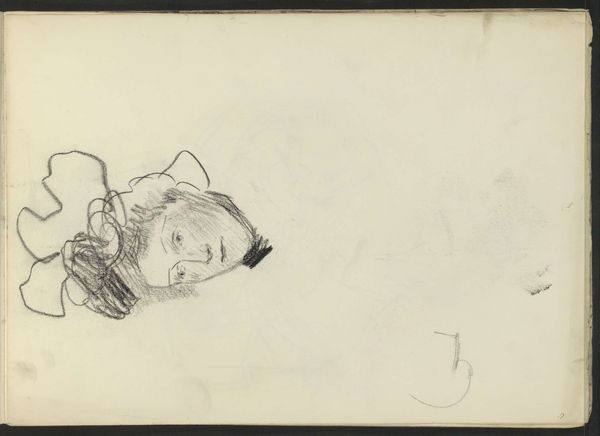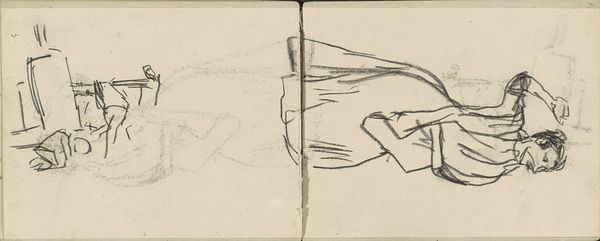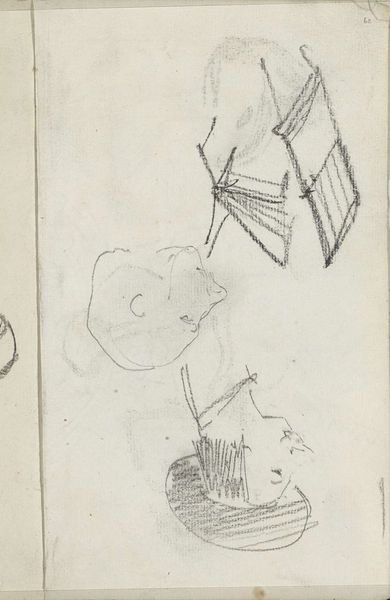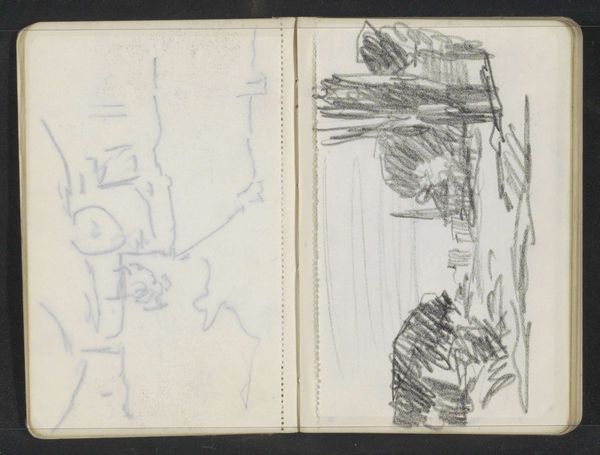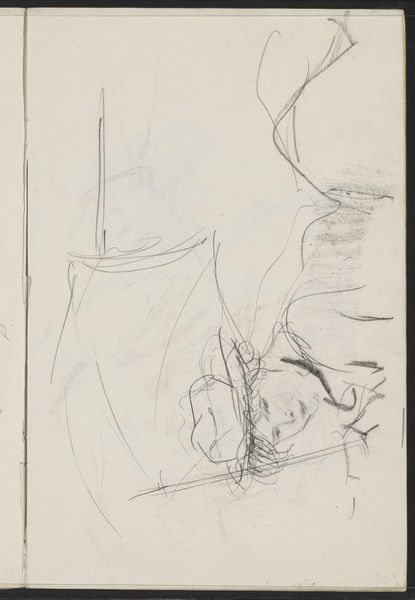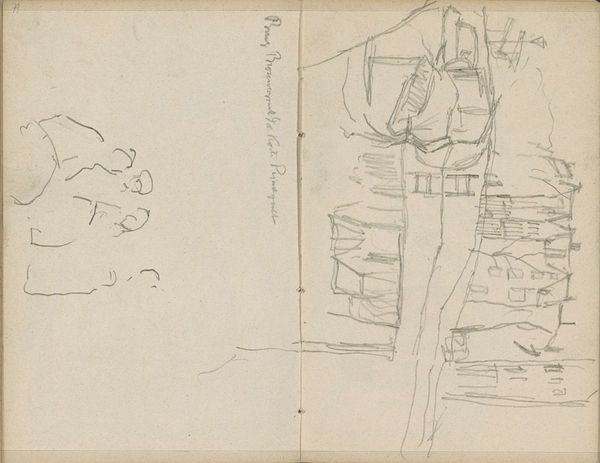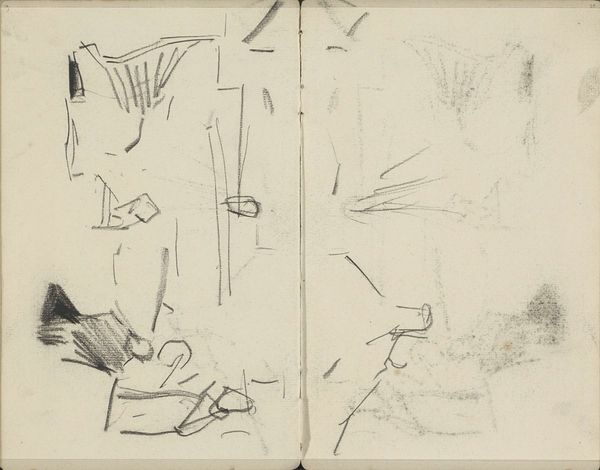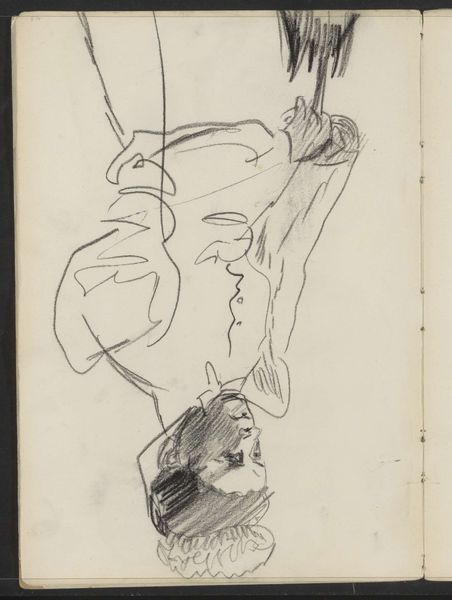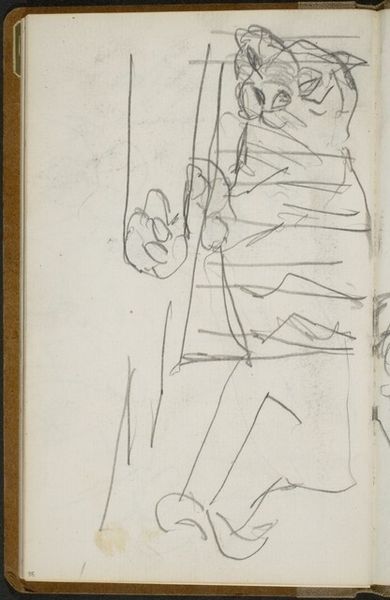
drawing, pencil
#
drawing
#
art-nouveau
#
furniture
#
geometric
#
pencil
Copyright: Rijks Museum: Open Domain
Editor: We're looking at "Ontwerpen voor een lampvoet, kasten en een tafel" – Designs for a lampstand, cabinets and a table – a pencil drawing by Carel Adolph Lion Cachet from 1908. It seems almost like a collection of geometric puzzles, these tentative shapes of furniture… What do you make of the composition here? Curator: The interest lies primarily in the formal arrangement of shapes and lines. Notice how the artist uses varying densities of pencil strokes to define volume and suggest depth, despite the overall flatness inherent in a design sketch. Consider, too, the relationship between the ornate, curvilinear designs on the lamp base and the more rigidly rectangular forms of the cabinets. Editor: Yes, the contrast is striking. The lamp base feels almost baroque compared to the streamlined cabinets. Is that contrast intentional, do you think? Curator: Intentionality is perhaps less crucial than the observed visual effect. The juxtaposition highlights the dialogue between ornamentation and structural integrity, concepts central to the Art Nouveau aesthetic. Observe how the artist employs repeated geometric motifs across different designs, creating a sense of visual harmony despite the stylistic divergence. Editor: So it’s more about the visual relationship between these forms and less about what Cachet might have been thinking while he sketched? Curator: Precisely. The power resides in the observable elements: line, shape, texture, and their interplay within the compositional space. Close visual analysis reveals how these elements contribute to the artwork's overall aesthetic impact. What have you found to be the artwork's overall aesthetic impact? Editor: I hadn’t thought of it that way. It's fascinating how much can be gleaned simply from examining the forms themselves, rather than seeking external meaning. Curator: Indeed. It reminds us that the visual experience is primary. We can interpret that.
Comments
No comments
Be the first to comment and join the conversation on the ultimate creative platform.
